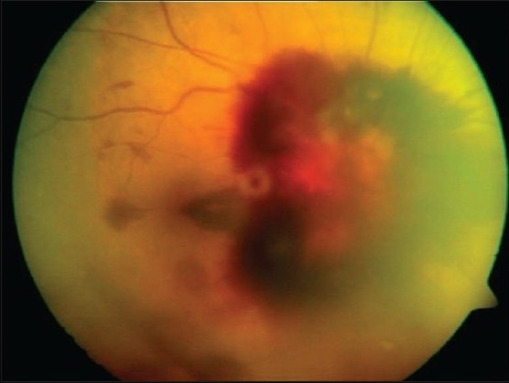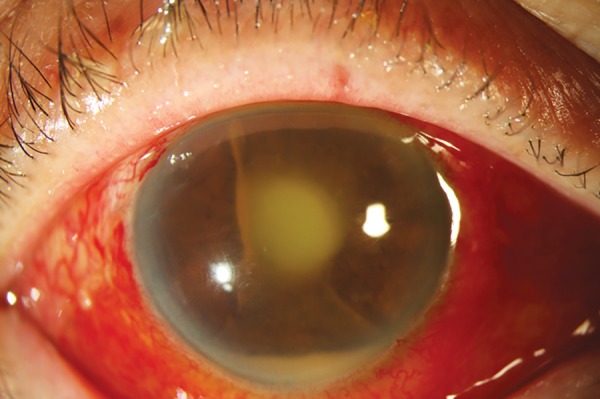Playlist
Show Playlist
Hide Playlist
Endophthalmitis
-
Slides OP Diseases of Lens Vitreous Body.pdf
-
Reference List Pathology.pdf
-
Download Lecture Overview
00:00 That's the lens and cataracts. Let's look at diseases or primarily infection of the vitreous body. Endophthalmitis is inflammation of the vitreous humor and actually it's just an inflammation, maybe infectious or it can be non-infectious and sterile. What are the signs and symptoms? There will be pain in general. When there is inflammation, there will be pain. 00:28 As inflammation involves the other structures of the eye such as the conjunctiva and/or the lacrimal gland, we will get increased tearing, that's all part and parcel of the inflammatory process. The redness there is because of inflammation that has extended on to the conjunctiva. There will be photophobia. Because of the inflammation, we will tend to have pupillary dilation, mydriasis. And when we do that, you go into a bright room and it makes you wince because your pupils cannot rapidly contract as they should. And with all that edema throughout the eye, you're going to have an abnormal vision, you're going to have blurring because of the edema. Swollen eyelids, this is a blepharitis that is secondary to infection of the vitreous body. And you're going to have other changes, corneal edema. So the cornea will become inflamed, will have increased fluid within it, as you can see the red eye the congestion of the conjunctiva. And hypopyon, "Oh my goodness" pus, that little rim of yellowness at the base of the iris is pus in the anterior chamber. And that's, again, inflammatory cells that are crawling out in response to the ongoing inflammation, infectious or otherwise. What do we do about it or how do we get there? Intraocular surgery. You can have penetrating injury, so something gets stuck in your eye, obviously it may carry in with infectious organisms. Other intraocular infections, so something that may start as a superficial corneal ulcer and infection may eventually progress depending on the virulence of the pathogen into the vitreous. You can also have systemic seeding. So if bacteria or other pathogenic agents are in the bloodstream, they can just luckily draw, set up shop within the vitreous and we have endophthalmitis. What does it look like in fundoscopic exam? Basically, you're seeing lesions where you're getting deposits of neutrophils. It's an inflammatory response. The vasculature may be very prominent, you may have edema as well. This is just an example of fungal endophthalmitis and we have neutrophils and fungus back there on the retina. And with that, we've covered cataracts and inflammation of the vitreous body.
About the Lecture
The lecture Endophthalmitis by Richard Mitchell, MD, PhD is from the course Posterior Segment Eye Diseases.
Included Quiz Questions
What is a hypopyon?
- Pus in the anterior chamber
- Pus in the posterior chamber
- Pus in the palpebrae
- Pus in the vitreous humor
- Pus in the cornea
What is a common etiology of endophthalmitis?
- Intraocular surgery
- Blockage of the lacrimal caruncle
- Blepharitis
- Untreated glaucoma
- Untreated keratoconus
What does endophthalmitis look like on a fundoscopic exam?
- Focal yellow retinal lesion
- Hard exudate
- Cherry red spot
- Pus
- Ischemic necrosis
Customer reviews
5,0 of 5 stars
| 5 Stars |
|
5 |
| 4 Stars |
|
0 |
| 3 Stars |
|
0 |
| 2 Stars |
|
0 |
| 1 Star |
|
0 |





